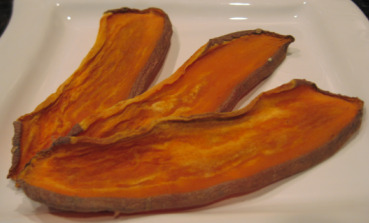rouen
Experienced Member
When Dingo was a puppy he was a big chewer. He never chewed things he wasn't supposed to(other than my wallet), but that may be because I was creative and proactive with him.
I cook most nights, so when he was a puppy he got extra's from cooking. He use to love carrots, but his favorites were sweet potatoes.
A few years ago someone told me raw potatoes were bad for dogs. I never had an issue with Dingo, he never got the runs or anything from the taters. And I've only really found info on green(still growing) potatoes being toxic. Most high end dog food have potatoes as a filler.
So what do you think, are raw potatoes a no-no? Or are they fine in moderation? If you think they're fine would you say they'er a better alternative to bully sticks and rawhide for young puppies?
I cook most nights, so when he was a puppy he got extra's from cooking. He use to love carrots, but his favorites were sweet potatoes.
A few years ago someone told me raw potatoes were bad for dogs. I never had an issue with Dingo, he never got the runs or anything from the taters. And I've only really found info on green(still growing) potatoes being toxic. Most high end dog food have potatoes as a filler.
So what do you think, are raw potatoes a no-no? Or are they fine in moderation? If you think they're fine would you say they'er a better alternative to bully sticks and rawhide for young puppies?




 different species.
different species.


 and all my dogs have loved them..
and all my dogs have loved them..